
At long last, after a nearly 600-day absence caused by the pandemic, minor league baseball is back. Full-season teams across the country are opening their gates on May 4, marking the first official action since the 2019 Triple-A Championship Game between Memphis and Sacramento.
Even though the games are back, Opening Day will be far from a return to normalcy. Between 2019 and 2021, Major League Baseball moved forward with its One Baseball plan, which rearranged the minor leagues.
The Rookie-advanced Pioneer League is now a professional partner league with ties to MLB but unaffiliated players. The short-season New York-Penn League has dissolved. Three of its teams jumped up to full-season ball. Other former NYPL teams joined summer wood bat amateur leagues. The Rookie-advanced Appalachian League retained its league identity but now operates as a summer wood bat amateur league. Six of the eight teams from the old short-season Northwest League are now High-A affiliates.
Beyond the restructuring, rule changes will be sprinkled throughout the minors. Included among those rules are the implementation of the automatic ball-strike system, larger bases, new regulations on pickoffs and plenty more. The biggest differences between this year and 2019, however, revolve around the effects of the pandemic. A year with little to no revenue has wrought immense havoc on teams and their front offices, and the continued threat of Covid-19 will mean teams have to shake up the way they do business both in and out of the public view.
With that, Baseball America asked minor league front office executives around the country a series of questions about the issues facing the sport now and in the future.
This story is from the {{IssueName}} edition of {{MagazineName}}.
Start your 7-day Magzter GOLD free trial to access thousands of curated premium stories, and 9,000+ magazines and newspapers.
Already a subscriber ? Sign In
This story is from the {{IssueName}} edition of {{MagazineName}}.
Start your 7-day Magzter GOLD free trial to access thousands of curated premium stories, and 9,000+ magazines and newspapers.
Already a subscriber? Sign In
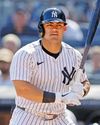
THE SERVICE TIME CONUNDRUM
MLB’s byzantine service time rules cloud rookie status and now PPI eligibility

LUIS TIANT WAS MLB'S MOST SUCCESSFUL CUBAN PITCHER
On a scouting trip to Cuba in 1957, Bobby Avila discovered 16-year-old righthander Luis Tiant on the island's Juvenile League all-star team.
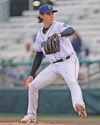
ORGANIZATION REPORT
Outfielder Heston Kjerstad's career has been unique, to say the least.

TOP 10 NL EAST
From the moment Thomas White stepped on a high school mound, he was viewed as the top lefthander available in the 2023 draft.

PREPARATION PAYS OFF
lowa politician J.D. Scholten makes a surprising return to pro ball at age 44

MAKING THE GRADE
Assessing the future value of graduated National League prospects
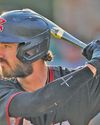
TOP 10 NL WEST
Even in high school, Bryce Eldridge could hit the ball a mile. The 6-foot-7 righthander could also touch 96 mph off the mound.
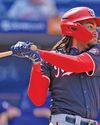
Wood Has Towering Upside- Nationals rookie James Wood also stands 6-foot-7 and also has game-changing power.
Aaron Judge and Oneil Cruz are 6-foot7 sluggers who stand out for their power in this year’s MLB Best Tools voting. Wood spent half of this season with Triple-A Rochester before making his MLB debut on July 1. While he was in the International League, he captured managers’ attention. Wood unanimously won Best Power Prospect and also claimed Most Exciting Player in a survey of league skippers. Wood hit .353/.463/.595 with 10 home runs in 52 games for Rochester. His .242 isolated slugging was the best for a player 21 or younger at Triple-A this season.
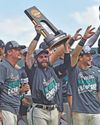
ROAD BLOCK?
Scholarship expansion puts mid-majors at a major disadvantage on the road to Omaha

ROYALS REVIVAL
A revamped and rejuvenated farm system has Kansas City ready to rebound